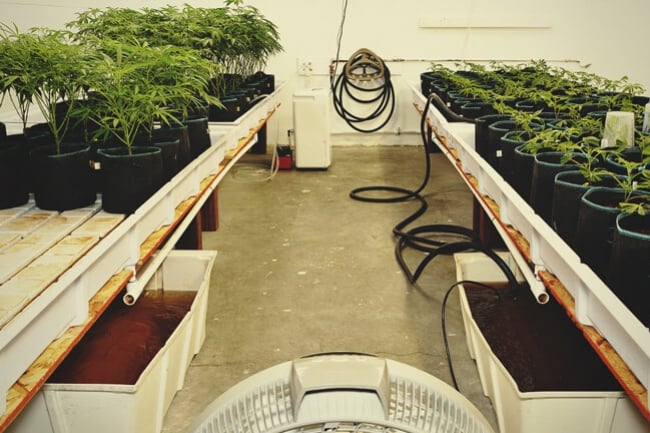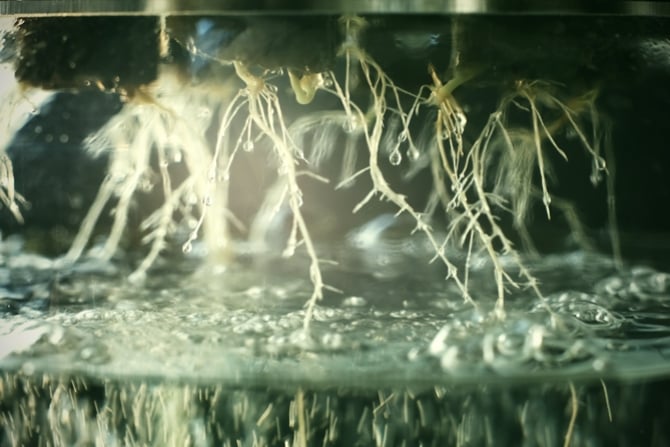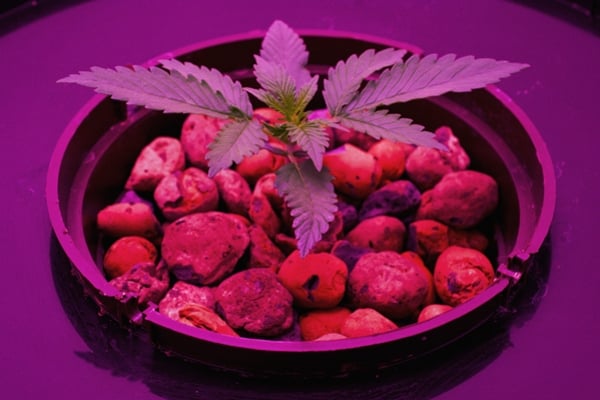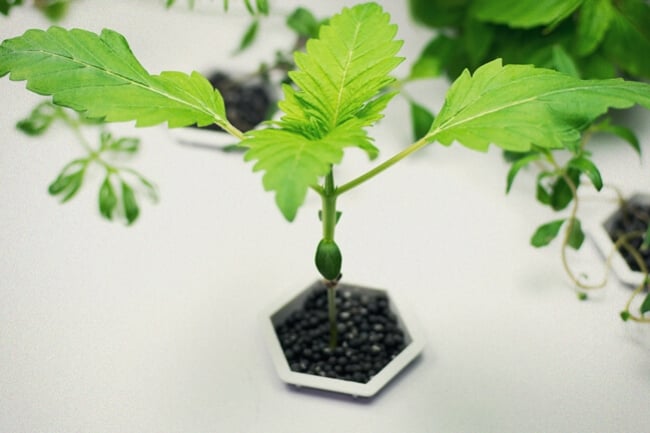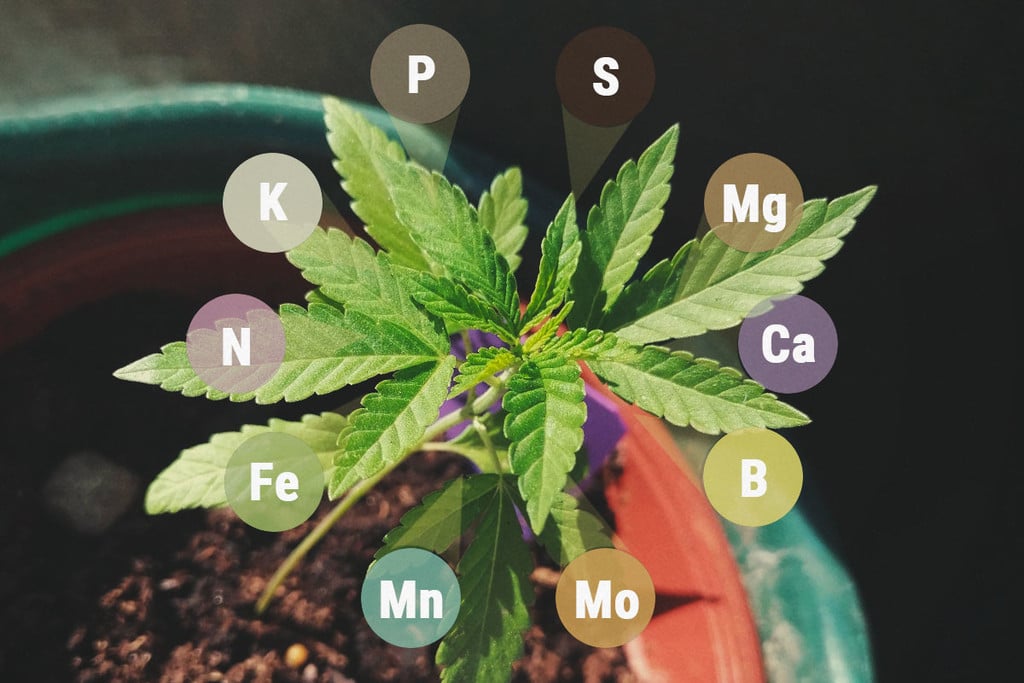.
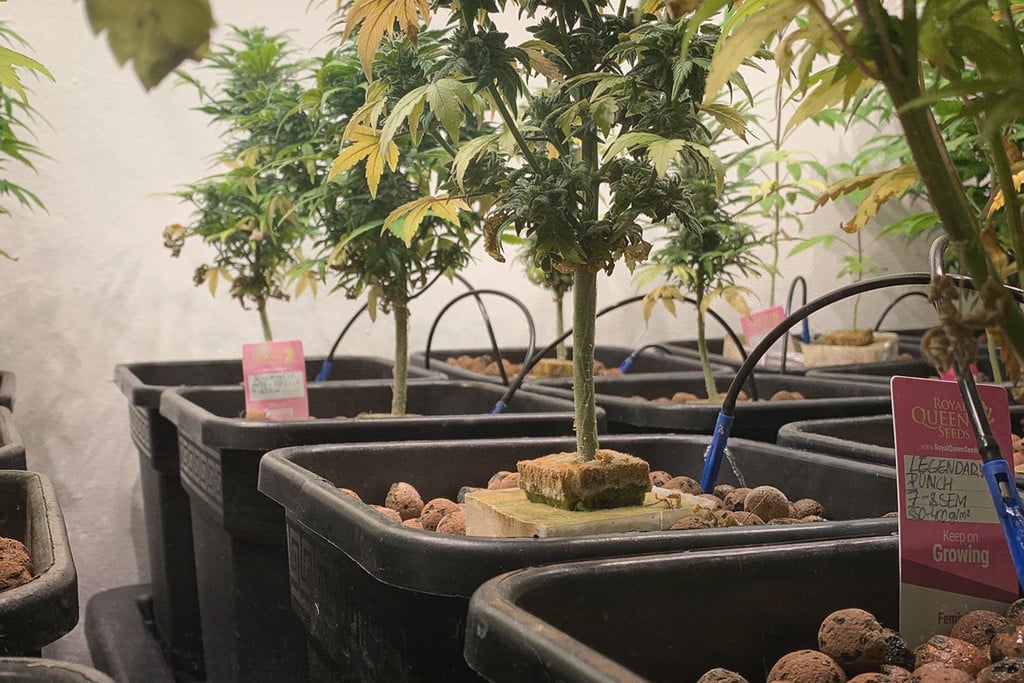
How A Continuous Flow Hydroponics System Can Help You Grow Better Cannabis
So, you don't want to lug large bags of soil into your home, you don't want to wait forever for your plant to mature, and you want the biggest yields possible? Well, you need to consider growing your weed plants in a continuous flow hydroponics system. This approach allows plants to surge in growth and unleash peak productivity.
Hydroponic systems boast some significant advantages compared to growing weed plants in soil. They’re less messy, less prone to pests and disease, and allow plants to develop much quicker. However, they’re not all the same. Continuous flow hydroponic systems differ from other approaches. Instead of keeping plants constantly or intermittently submerged in water, they deliver a constant stream of water or mist to keep roots fed and hydrated.
Contents:
A Primer on Continuous Flow Hydroponics
If you’re new to continuous flow hydroponics, the clue is in the name. Systems that autumn into this category constantly expose cannabis plant roots to a nutrient solution. Like other hydroponic techniques, plants grow from seed to harvest without ever coming into contact with soil. Instead, the nutrient solution contains everything they need to grow and remain healthy, including water, macronutrients, micronutrients, and dissolved oxygen.
However, continuous flow hydroponics differs from other approaches that only intermittently bathe plant roots with this nutritious mixture or keep them completely submerged. By keeping roots constantly fed and hydrated with a steady stream of water and nutrients, they have unending access to all of the ingredients that make for healthy plants, as well as ample levels of oxygen, resulting in rapid growth and hefty yields.
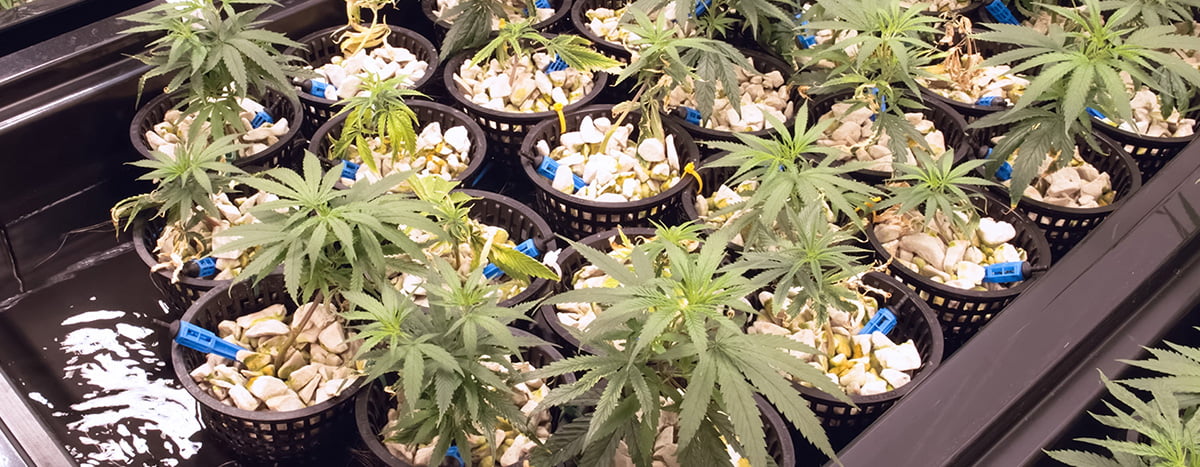
Overarching Concepts of Continuous Flow Hydroponics
Although all continuous flow hydroponic systems share the same core concept, they feature drastic differences that make them unique. Some of these systems pump a non-stop stream of water into growing channels from a holding reservoir filled with synthetic nutrients, whereas others use an external tank filled with fish to produce the nitrogen that plants need to grow. Other forms of continuous flow hydroponics systems do away with streams of water altogether and utilise misting systems that fill the air with moisture.
Despite their distinct differences, all of these systems capitalise on of the sustained application of nutrients and water that nourish plant roots before being captured and recycled back into the system. It might come as a surprise, but this approach uses approximately 10 times less water than soil growing methods. Most of these systems also use similar equipment. These pieces of kit include:
- Nutrient reservoir: This external unit houses the nutrient solution that contains everything cannabis plants need to thrive during different stages of the growing cycle.
- Plant trays/channels: This structure holds the cannabis plants and provides a passageway through which the nutrient solution circulates. They vary in shape and size, from narrow and long channels to wide trays with much larger surface areas.
- Air stone: This device sits in the nutrient reservoir and pumps oxygen into the mixture that plant roots need to respire and uptake nutrients.
- Pump: This piece of kit forces the nutrient solution from the reservoir into the growing channel or tray.
- Net pots: These components hold the cannabis plants in place while allowing their roots to grow downwards into the growing channel or tray.
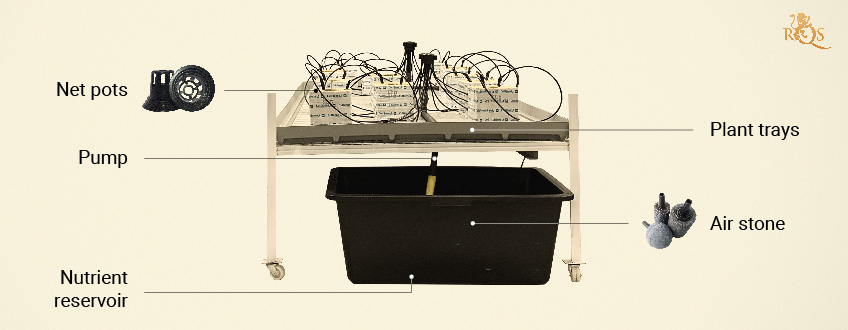
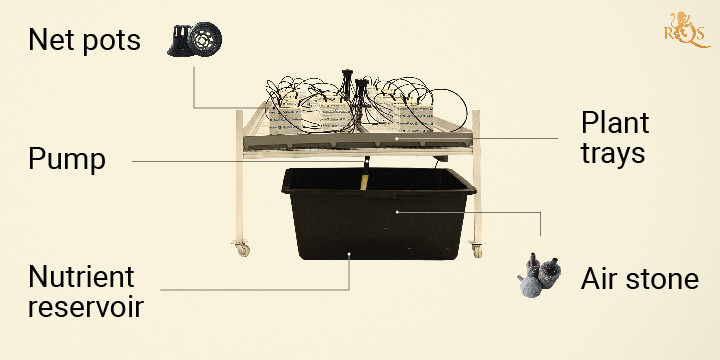
The Advantages and Disadvantages of Continuous Flow Hydroponics
Despite their proven genius, cannabis innovators have yet to develop the perfect cultivation system. Every approach has attractive advantages, as well as inevitable drawbacks.
Growing cannabis using continuous flow hydroponics offers higher yields, excellent levels of dissolved oxygen, and optimal nutrient assimilation. However, these systems are prone to organic matter build-up and they can get quite noisy at times. Below, you’ll get to know these advantages and disadvantages in depth. Weigh up both the pros and cons of continuous flow hydroponics to decide if this approach is right for you.
The Advantages of Continuous Flow Hydroponics
Continuous flow hydroponics boasts several benefits that make it more suitable than growing in soil and other hydroponic systems in some scenarios. Overall, these advantages include:
- Higher yields: Cannabis plants grown in continuous flow hydroponics systems often return superior yields. Easy access to nutrients, reduced pest pressure, and the lack of soil pathogens make the growing process swift and linear.
- Faster harvests: Instead of sending roots into the soil in search of nutrients, and establishing relationships with microbes to access certain minerals, cannabis plants in continuous flow systems get everything they need constantly delivered to their roots, resulting in faster growth. However, when it comes to photoperiod strains, the light cycle also has a drastic effect on when plants mature.
- Increased oxygenation: Cannabis roots require oxygen to respire and facilitate physiological processes. When supplies dwindle, roots become predisposed to pathogens. Continuous flow hydroponics keeps roots hydrated with a nutrition solution high in dissolved oxygen, helping them to stay healthy and disease-free.
- Reduced water use: Contrary to what you might think, continuous flow hydroponics uses much less water than soil systems.
The Disadvantages of Continuous Flow Hydroponics
Like every other growing technique out there, continuous flow hydroponic systems also have their downsides. Get to know the disadvantages of these systems to see where things can go wrong:
- Energy intensive: Despite using less water, continuous flow hydroponic systems require electricity to run the pumps and air stones; indoor systems also need powerful lights. Unless you have the money to invest in a solar system, you’ll have to depend on your energy supplier for electricity.
- Require maintenance: Although the absence of soil means much less mess to deal with, hydroponic systems still require maintenance and cleaning. Algae and organic matter can build up in the pipes, and you should scrub down your entire setup between grows to prevent pathogens from proliferating.
- Susceptible to malfunctions: You can automate continuous flow hydroponics systems to run themselves, but things can and do go wrong. Power cuts, failed pumps, and malfunctioning air stones will leave your system in urgent need of human intervention. Fail to identify these issues, and you’ll put the health and productivity of your plants at risk.
- Noise: Who doesn’t love the sound of trickling water? You’ll enjoy this tranquil sound—if you can hear it over the monotonous drone of your pump. Outside setups don’t cause much of an issue when it comes to noise. However, if you’re growing in your bedroom, you’ll quickly find yourself wanting to relocate your system.
Different Types of Continuous Flow Hydroponic Systems (with diagrams)
Explore the diverse world of continuous flow hydroponic systems with our in-depth guide, featuring diagrams to help you better understand the various types and their unique benefits.
Nutrient Film Technique (NFT) Hydroponic System
NFT systems consist of narrow and long growing channels positioned at a slight incline. Net pots containing cannabis plants are slotted into the channels, and a nutrient solution pumped up from an external reservoir exposes roots to a continuous current.
While shallow, this stream contains everything that cannabis plants require to develop, including macronutrients, micronutrients, and oxygen. Over time, plants develop a film containing nutrients around their roots that keep them fed and hydrated. These systems are highly modular and are often stacked vertically to maximise productivity in small spaces.
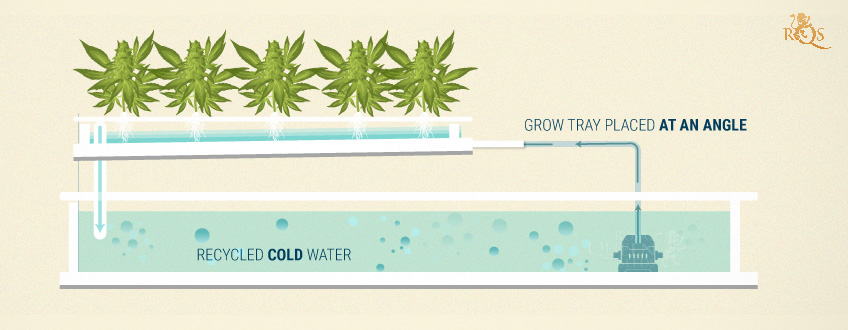
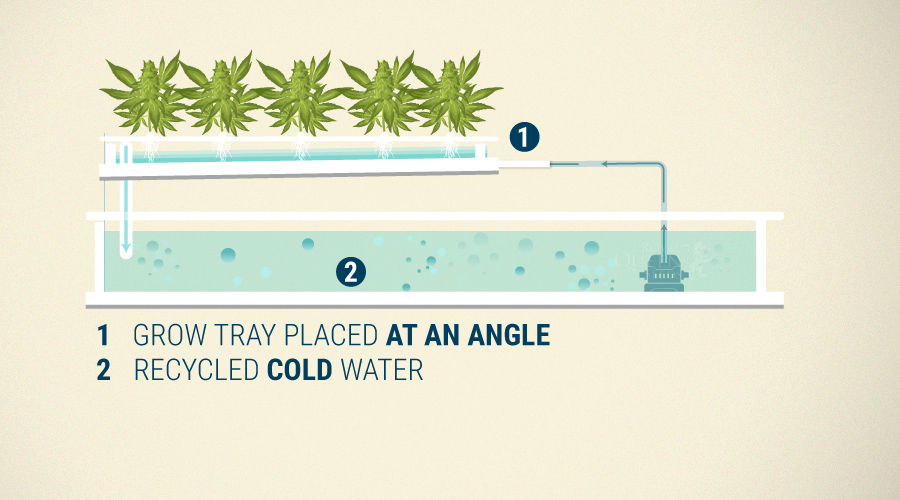
Continuous Drip Hydroponics
Instead of delivering a constant stream of nutrient solution, this method delivers this life-giving liquid one drip at a time. It shares many similarities with drip irrigation systems used when growing cannabis in soil. This approach keeps plants sustained, but the slow transportation of solution means less noise and a reduced risk of organic matter clogging the pipes. Plant roots also have ample access to oxygen at all times, as they’re never submerged in water.
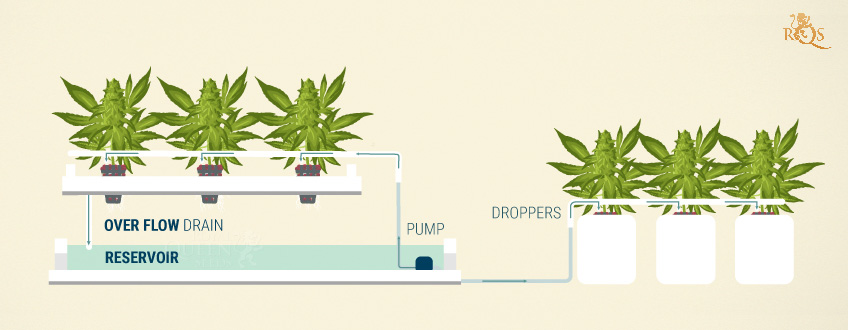
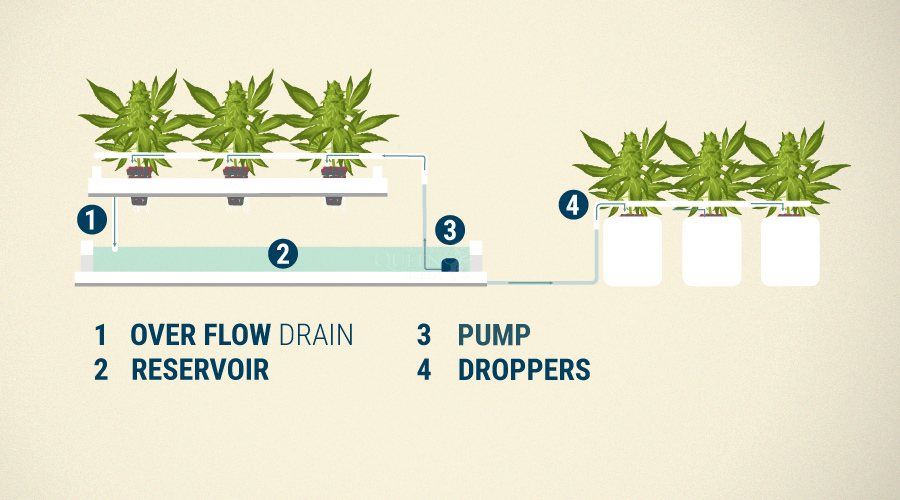
Aquaponic Continuous Flow Setups
This type of system leverages fish—yes, fish—to feed cannabis plants. Continuous flow aquaponics is compatible with drip and NFT systems but uses an entirely different type of reservoir. Instead of pouring synthetic ionic nutrients into this body of water, growers raise fish that produce nutrient-rich excrement that keeps plants thriving. Meanwhile, the plant roots help to filter the water, keeping the fish clean and healthy.
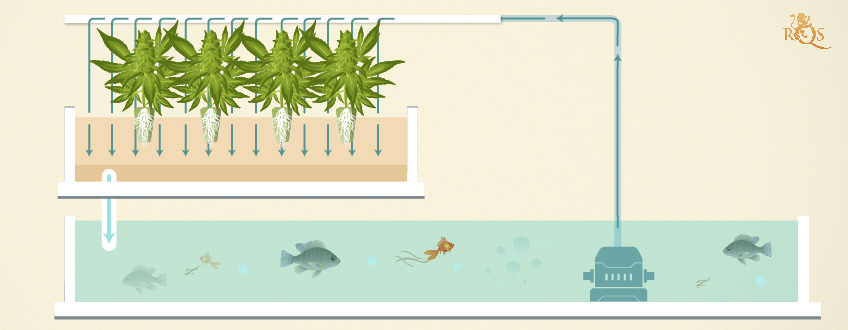
Aeroponic Continuous Flow Setups
Aeroponic continuous flow systems consist of a growing chamber, typically made of PVC pipes. Net pots are inserted into the outside of the chamber, and plant roots grow into and are suspended in the air. Instead of delivering a current or drip of nutrients, a misting system delivers a constant cloud of nutrients and water to the roots. The solution eventually collects in the bottom of the chamber and recirculates back into the external reservoir. This type of hydroponic system uses very little water and often sports a compact design that’s easy to conceal.
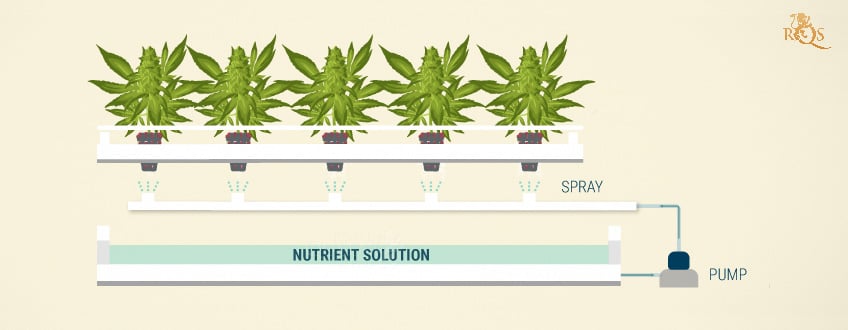
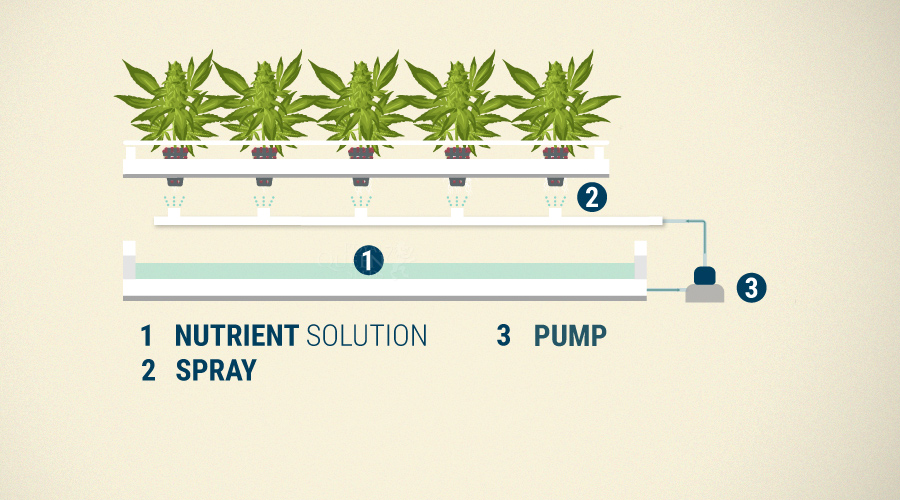
Continuous Flow Hydroponics Produces Healthier Plants and Bigger Yields
Although each continuous hydroponic system features a distinct design, they all share the same concept: They keep plant roots constantly exposed to nutrients, water, and oxygen. In doing so, each of these approaches results in rapid growth, significant harvests, and excellent nutrient assimilation. You’ll also encounter less pest pressure and have an easier time identifying and remedying signs of disease. So, why not give continuous flow hydroponics a go? Pick your favourite design, grab some materials, and happy growing!


























